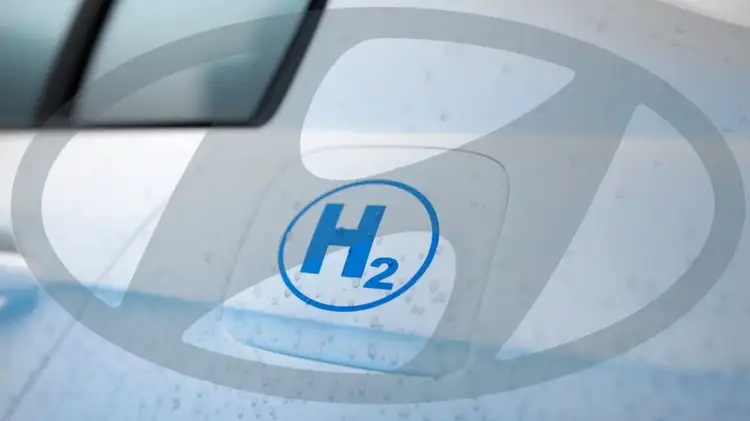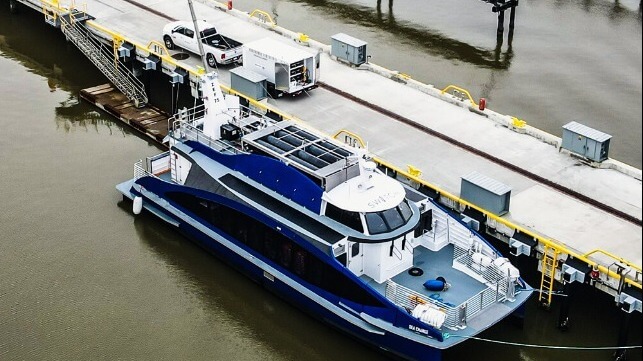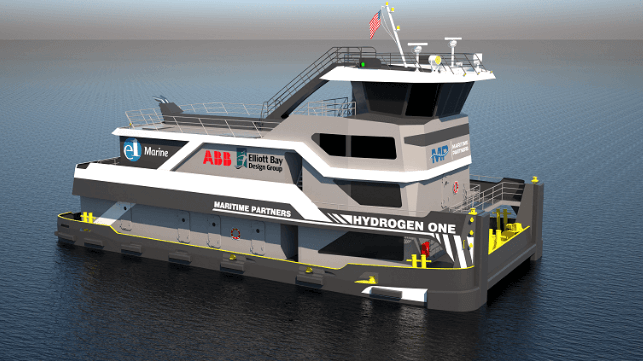
Hyundai backs hydrogen powered cars despite being a decade behind EVs
The company feels that battery electric technology is far ahead, but hydrogen cars are still worth pursuing.
Hyundai has announced that while it believes that H2 vehicles remain a decade behind their battery electric counterparts, it is still worthwhile to invest in both zero-emission technologies.
The company still plans to continue in the electric and fuel cell vehicle marketplaces.
Hyundai Motor is investing in electric vehicles (EVs) but is also moving forward with both hydrogen powered cars and heavy-duty trucks. Its first electric hatchback will be on its way to the United States in the next few weeks. Moreover, the automaker also unveiled a battery electric SUV last month in Los Angeles.
That said, even as it starts to roll out new electric vehicles, the Korean automaker also has intentions to bring hydrogen cars into the mainstream. Still, it doesn’t expect H2 vehicles to be the most competitive vehicles until closer to 2030.
Hyundai has already said the system in its hydrogen powered cars and trucks is twice as powerful.
The H2 fuel cell vehicles will not only be twice as powerful as its current version but is also 30 percent smaller and will cost half as much. At the same time, José Moñoz, Hyundai chief operating officer and head of its operations in the Americas said that hydrogen cars remain at about the same point in development that battery electric vehicles had reached in the early 2010s.

“At that time people were still asking, ‘Is this going to happen? This is not true. We don’t have infrastructure. People won’t like it.’ Now there’s (charging) infrastructure; the technology has evolved; the ranges are better; the features are great. And more importantly, people who buy one now say they’ll buy another,” said Moñoz in a recent Forbes report discussing the automaker’s hydrogen powered cars. “Hydrogen is going through a similar phase—the phase of introducing a new technology. But we need better (fueling) infrastructure because it’s still very limited. However, in terms of the reaction by the consumer, when they drive a vehicle that is powered by hydrogen, there is a fantastic reaction.”

Many are wondering…is hydrogen energy the future? There are many signs that point to yes…someday, the world could rely on H2 to keep the lights on – Learn more about How efficient is a hydrogen fuel cell. Also, why big named companies like Rolls Royce, Shell, BP and more investing into green hydrogen projects for the near future – Read more about – Who is the largest producer of green hydrogen? Also, make sure to visit our H2 Learning Center.
US Hydrogen Fuel Cell Powered Ferry Completes First Fueling

In the race to develop and operate hydrogen fuel cells for commercial vessels, the U.S. effort known as the Sea Change, a catamaran ferry to operate in San Francisco Bay, reports that it has achieved additional key milestones. The vessel, which was launched in August, has completed its first fueling with hydrogen gas for a vessel in the United States and has received critical approvals as it continues on track to enter service in 2022.
Switch Maritime, which built the vessel as the first in a series it plans to develop with hydrogen propulsion, reported that the Sea Change completed its first hydrogen fueling. At All American Marine shipyard in Bellingham, Washington, the Sea Change received hydrogen into its 242 kg tanks on the upper deck. The fueling during sea trials is being handled by West Coast Clean Fuels, which Switch retained to develop and permit the end-to-end fuel supply chains that will deliver hydrogen to the Sea Change, as well as BayoTech, for high-pressure gaseous hydrogen delivery using transport trailer-to-ship transfer to Sea Change during sea trials in Washington.
The Sea Change uses a first-of-its-kind maritime hydrogen and fuel cell system designed and developed by Zero Emission Industries. The company also developed the system demonstrated during the fueling on November 18 that allows the vessel to receive gaseous hydrogen directly from a hydrogen truck. The fuel loaded in the vessel’s tanks included green hydrogen, produced in California by an electrolyzer powered with renewable solar power.
“While it’s taken us years to get to this point, the timing couldn’t be better,” says Pace Ralli, CEO of Switch Maritime. “In this moment, our nation is more committed than ever to making the transition to a carbon-free economy. Hydrogen will play a major role in that future, and major players in the maritime industry are ready to decarbonize. We are grateful to all our partners, and proud to play a small role in accelerating the widescale adoption of hydrogen power. Hopefully this is just the first domino to fall.”
The fueling follows the regulatory approval in October by the United States Coast Guard of the hydrogen powertrain and storage systems onboard the Sea Change, representing the culmination of years of cooperation with the USCG focused on safely integrating hydrogen power and storage systems on passenger vessels. According to the companies, the achievement of this significant milestone they believe will unlock the possibility of many future deployments of similar hydrogen power systems on all vessel types – including ocean-going containerships.
The new 75-passenger ferry, which is a 70-foot catamaran ferry designed by Incat Crowther, is equipped with a hydrogen fuel cell system from ZEI. The system includes 360kW of fuel cells from Cummins and 242kg of hydrogen storage tanks from Hexagon Purus. A 600kW electric propulsion system from BAE Systems includes 100kWh of lithium-ion battery storage from XALT. It was built at All American Marine and launched in August.
The Sea Change is unique in that it uses gaseous hydrogen in its fuel cell. Other demonstrate vessels are burning liquid hydrogen in a more traditional combustion engine. Switch says the Sea Change will use the hydrogen in fuel cells producing electricity to power electric motors for distances up to 300 nautical miles and speeds up to 20 knots. That will give the vessel similar capabilities to similar diesel-powered vessels.
Having successfully performed the first hydrogen fueling, the Sea Change is now performing final operational sea trials before delivery from the shipyard and before starting operations in the California Bay Area in Q1 2022.
Switch’s vision is to achieve a fully zero-carbon fueling supply chain of green hydrogen, which is currently in short supply in the U.S. Building more and larger vessels that demand large volumes of hydrogen offtake the company believes will increase green hydrogen production volumes, and drive the cost of hydrogen lower than diesel, further advancing the rollout of hydrogen-fueled fleets.
Leading Towboat Owner Plans to Buy a Fuel Cell-Powered Prototype

Maritime Partners, a leading vessel owner and financier in the inland towing sector, is planning to order a prototype methanol-fueled, fuel-cell-powered towboat for delivery in 2023.
The boat will be built to a novel design developed by the naval architects at Elliott Bay Design Group (EBDG), in partnership with system integrator ABB and methanol-to-hydrogen supplier E1 Marine. The combination of methanol fuel, E1's methanol reformer (which strips out the methanol's hydrogen) and a hydrogen fuel cell gives it a significant edge over battery-powered systems for sheer range. The system delivers about 550 miles of transit distance - enough for about four days of travel - for a typical towboat running at normal speeds.
EBDG thinks that this combination may be the only commercially-available option for decarbonizing a towboat for long-haul operations. Finding a new power source for the towboat sector is difficult, since towboats have limits for size and displacement in order to fit under bridges and navigate shallow rivers. Batteries only work on fixed routes, with daily time and access for charging, and a towboat’s limited storage capacity restricts the use of pressurized or cryogenic gases as fuels. There are also very few dockside facilities that can bunker a towboat with these more technically-demanding fuels, and as a practical matter, this would limit a vessel’s range and functionality. By contrast, methanol is a ubiquitous industrial chemical and a familiar cargo for the inland towboat industry.
"The US towboat market is one of the most traditional in the world, so it's important to recognise what this represents: the first step in a shift from diesel electric to methanol electric, and a major advancement towards zero emissions," said David Lee of ABB Marine & Ports.
Virtually all methanol on the market today is derived from natural gas, and while its use does result in carbon emissions, the higher efficiency of a fuel cell means that operating the new system would result in a lower carbon footprint than operating a conventional diesel engine. According to E1, while running on standard methanol the hydrogen generator / fuel cell set produces zero particulates, zero NOX, zero SOX, and 28 percent less CO2 than a diesel generator. If the operator switches to "green" methanol produced from a source of green hydrogen - when and if it becomes available - this carbon footprint could be further reduced without altering the equipment on board.
“Shipowners have been understandably reluctant to commit to low carbon fuels until the infrastructure is available to refuel their vessels. The M/V Hydrogen One solves that problem by using methanol, which is safe and readily available worldwide," said Austin Sperry, the co-founder and COO at Maritime Partners.


No comments:
Post a Comment